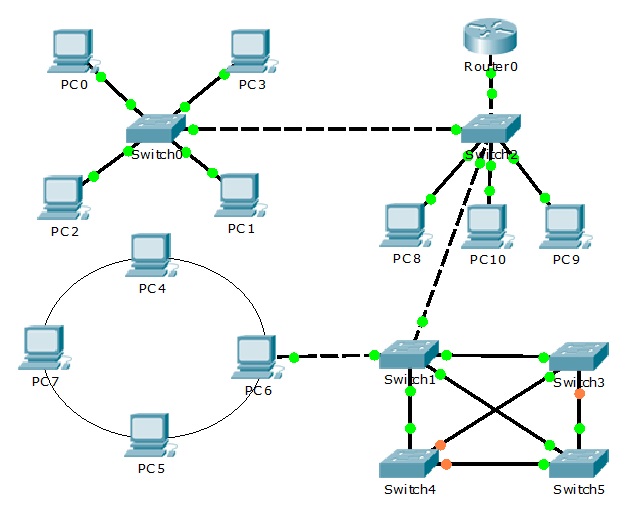What is Hybrid Topology ?
A combination of two or more different topologies makes for a hybrid topology. When different topologies are connected to one another, they do not display characteristics of any one specific topology. This is when it becomes a hybrid topology. It is chosen, when there are more than two basic working topologies in place already and these have to be connected to one another. When there is a star topology connected to another star topology, it still remains a star topology. However, when a star topology and bus topology are connected to one another, it gives rise to the creation of a hybrid topology. Often when the topologies are connected to one another, the layout of the resultant topology is difficult to comprehend, however, the new topology works without any problems.
Advantages of Hybrid Network Topology
1) Reliable : Unlike other networks, fault detection and troubleshooting is easy in this type of topology. The part in which fault is detected can be isolated from the rest of network and required corrective measures can be taken, WITHOUT affecting the functioning of rest of the network.
2) Scalable: Its easy to increase the size of network by adding new components, without disturbing existing architecture.
3) Flexible: Hybrid Network can be designed according to the requirements of the organization and by optimizing the available resources. Special care can be given to nodes where traffic is high as well as where chances of fault are high.
4) Effective: Hybrid topology is the combination of two or more topologies, so we can design it in such a way that strengths of constituent topologies are maximized while there weaknesses are neutralized. For example we saw Ring Topology has good data reliability (achieved by use of tokens) and Star topology has high tolerance capability (as each node is not directly connected to other but through central device), so these two can be used effectively in hybrid star-ring topology.
Disadvantages of Hybrid Topology
1) Complexity of Design: One of the biggest drawback of hybrid topology is its design. Its not easy to design this type of architecture and its a tough job for designers. Configuration and installation process needs to be very efficient.
2) Costly Hub: The hubs used to connect two distinct networks, are very expensive. These hubs are different from usual hubs as they need to be intelligent enough to work with different architectures and should be function even if a part of network is down.
3) Costly Infrastructure: As hybrid architectures are usually larger in scale, they require a lot of cables, cooling systems, sophisticate network devices, etc.
Thanks, If you like this tutorial please share this article to your friends in FB, Twitter,




